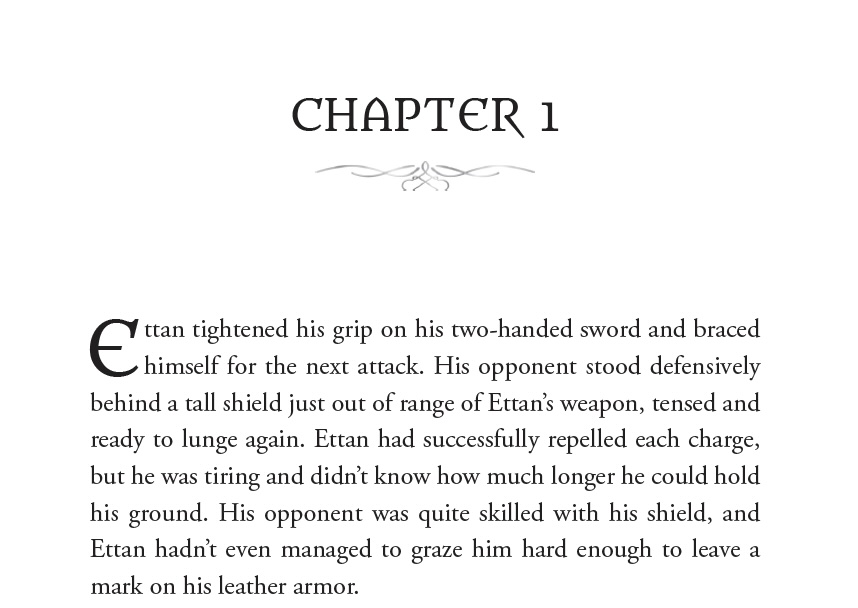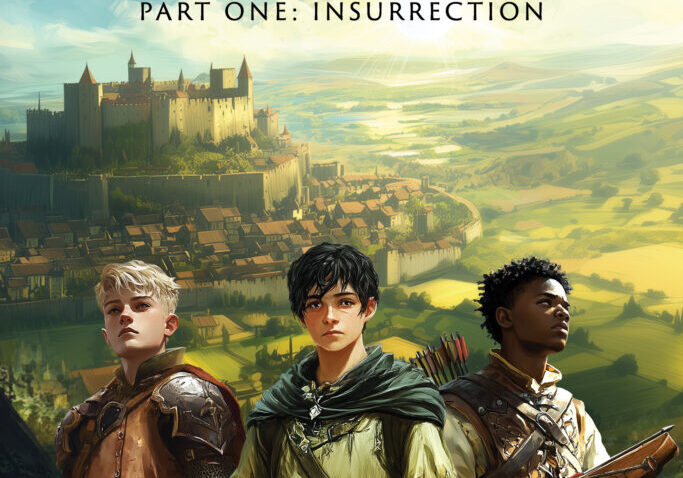Book Notes: Character Choices August 18, 2025 / Ari Magnusson
I started Knights Without Ceremony twenty-seven years ago, before the rising awareness of underrepresentation in the authorship and subject matter of books, especially those for kids. After a few flirtations with literary agents—and an offer of representation I declined—the manuscript went into the proverbial desk drawer for a couple of decades while my writing went in other directions. But while the manuscript was hidden away, the story was not forgotten. The characters continued to haunt my thoughts, silently asking to be committed to the page and set free.
I resumed work on the book a few years ago, but given the changing times, I wanted to make some updates. The plot involved a teenager and his little brother, but as I surveyed the literary landscape, I kept seeing books featuring LGBTQ+ characters. I also noted that literary agents were all looking for underrepresented voices. The more I studied the publishing industry, the more I began to think I wasn’t going to find success with an apparent literary anachronism.
I spent a year delving into current novels for my target audience—stories about nonbinary youth grappling with cisgender society and trans kids struggling with identity and acceptance. And I loved these books. They were nothing like the stories I read as a kid, when LGBTQ+ people were largely invisible, their intimacies considered immoral and, in some places, illegal, and where their representations in popular media were for comic relief at best, though more often for mockery and denigration.
So I updated my book. The protagonist’s little brother became his nonbinary sibling, zir struggles at coming to grips with identity in a medieval world thrilling to explore and write (the character chose ze/zir as their pronouns). There was even a girl character who was in constant conflict with the nonbinary character—a push/pull dynamic between one who struggled herself to fit into a conservative mold and the other who wanted to smash it, melt the pieces, and bury the tools that made it. The story really sang, at least to me.
But then I noticed something about the middle grade market. Sales were sagging. Industry publications reported that boys were turning away from books and choosing graphic novels and comics. Literary agents were bemoaning the fact that editors at major publishing houses were not buying middle grade. The genre was in a deep freeze. And I wanted to know why.
I thought about all the books I had read that involved LGBTQ+ characters. I loved them because they opened a window into a world that was not familiar to me. They sensitized me to issues I had never considered. They educated me. But was that really what a typical middle grade reader wanted—especially given that the number of LGBTQ+ people in the population, according to the internet, is about 10%? In other words, could the falling sales in middle grade be because kids want to read books about people like themselves, but the frontlist books didn’t always represent them?
I decided to test my theory. Last summer, I hired ten local students—all boys—who fit my target audience. I asked their opinions on book covers, what they liked to read, and had them read a version of the novel. I asked for pointed feedback on the characters and whether writing them differently would make them more appealing and relatable. While just a very small sample—and completely unscientific—what I found was that the boys in my target audience wanted to read boy books. They wanted sword fights and rolling in the dirt and adventures. They were not interested in characters dealing with gender identity. They wanted books that reflected them.
Their feedback confirmed what I had suspected, and I set out to rewrite the novel (again). The protagonist’s sibling was reverted back to a little brother, and the girl character—largely in the book to create the conflict dynamic—was cut. Other boy characters who had been pushed to the background to make way for what I thought the book industry wanted were brought forward so their voices could be heard. My original vision for the book was restored.
Before you consider leveling any sort of anti-LGBTQ+ charge against me, consider that last year I updated one of my other books—a bullying prevention comic book for elementary and middle school students—to make it gender neutral. I had written the first edition in 2015, and every character was a “him” or “her.” I realized how awful it was for students to read a book on bullying that didn’t reflect everyone. So I updated the comic. Do you have any idea how difficult it is to change a comic book where you can’t modify the art but can only change the dialogue? Insanely difficult. But I wanted all kids who read the book to feel acknowledged, accepted, and valued. As painful as it was, changing that book was necessary.
As for my new novel, I think it’s okay to have a book that reflects one experience. As the booksellers in the store who were taken aback by my description of KWC remarked, kids have a way of finding the banned books. Yes, they do read the books with underrepresented voices (and thank you to all the people who ban books for highlighting the ones with ideas you fear most so they’re easy for kids to find). But while this book doesn’t break new ground in identity literature, I think that sometimes it’s okay just to have a fun read, to have an escape, to imagine ourselves through the experiences of relatable characters we might only find in a book.

Subscribe
To subscribe to the posts, please enter your email address.



